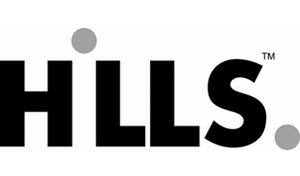
Blog
When and How to Say No at Work
Knowing when and how to say no at work is an important life skill that can help you keep control. It can be difficult to know when to say no because we usually view successful employees as those willing to do any task. It may also seem that saying no could affect your chances of promotion.
However, knowing how to say know can be just as challenging as finding the right time.
Did you know that being more assertive when you need to be and refusing to take on extra tasks or assignments can actually boost your success?

In this article, you will find out the benefits of saying no and when it’s appropriate to decline a request to do more work.
Benefits of saying no
Because the whole concept of finding it difficult to say no is connected with fear, it’s important to understand how the word “no” can benefit you. Here are a few benefits:
- Stay focused on what is really important
- Take control of your personal space because you set boundaries on your time and preferences
- Help prevent emotional distress because you don’t feel forced to do something you don’t want to
- Others will stop taking advantage of you
When to say no
There is no definitive answer to when the right time to say no is because circumstances can change. However, there are a few situations that call for a negative response to the request.
For example, if you are asked to do a job that doesn’t come under your job description. Politely refusing the task will actually gain you respect in the workplace.
Another situation to say no at work would be if the request doesn’t fit in with your priorities. In knowing how to say no, you should clearly explain what your priorities are and maybe even suggest an alternative solution.
Or, if you feel that you can’t deliver the results, saying no may be the only option for you. It will save you a lot of stress and also protect your reputation if you don’t manage to complete a task to the necessary standard.
How to say no
For many people, the hardest part about saying no is not when to say it, but how to say it. What should you keep in mind when refusing a request?
Here are some general principles to keep in mind about how to say no.
Don’t provide a long explanation
Avoid the temptation of over-complicating the refusal by going into a long-winded excuse as to why you say no.
For example, if the request doesn’t match your priorities or values, you can simply say: “I’ve got other commitments just now and I’m not available at the moment”. Or, you could say: “I wish I could because it sounds interesting, but I have to decline because…”
Use your calendar effectively
Saying no may become much easier if you keep a good calendar record of all your appointments both at work and in your personal life. For example, this gives you more confidence to say no because you realise that if you say yes to their request, you have to say no to your planned appointments – even if this is just having dinner between 6.30 and 7.30 p.m.
Give an alternative
In some situations, you may be in a position to share an alternative to the request. This is a great strategy if you are just learning how to say no because it removes the awkward feeling of refusing point blank. However, you need to make sure that you have a good suggestion and also be firm in your stand if the other person pushes you.
Defer the answer
Before just saying no to everything, you could find out a bit more about the request. For example, could the matter wait until a later time? Is there really no one else capable of doing it? Can you ask for time to think about it before giving your answer?
Sometimes you have to say yes
You also have to realise that there are circumstances when saying yes is the best course of action. After all, getting ahead in the workplace requires being a team player and you may have to align some of your work-related priorities with your employer’s.
Recent Posts
-
Working From Home — Ultimate Security Tips for a Safe Home Office
-
Unexpected Ways Stress Affects Your Body
-
The Worst Mistakes to Make When Working from Home
-
The Undeniable Worst Mistakes to Make in a Meeting
-
The Top 6 Myths About Leadership Debunked
-
The Best Apps for Busy Professionals
-
Is Telecommuting the Answer to Work-Life Balance?
-
The Importance of Career Goals to Boost Success at Work
-
The Shocking Dangers of Workplace Burnout
-
How to Restart Your Positive Emotions
























